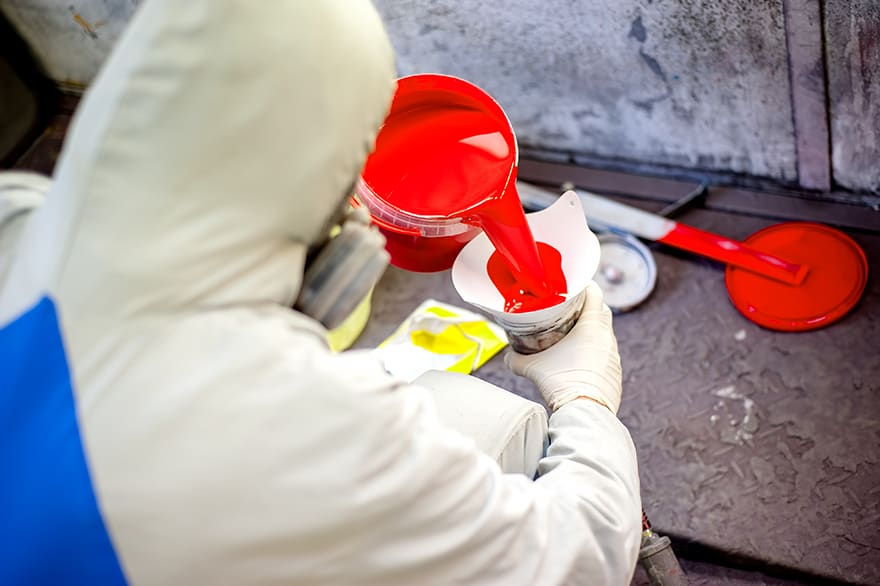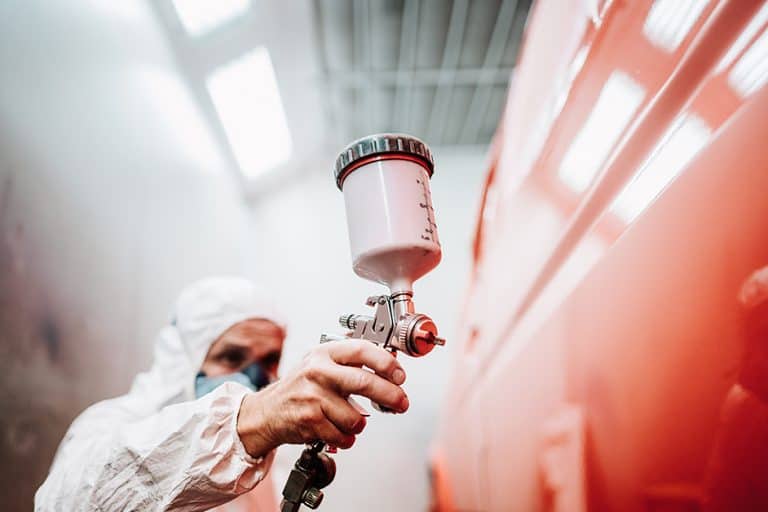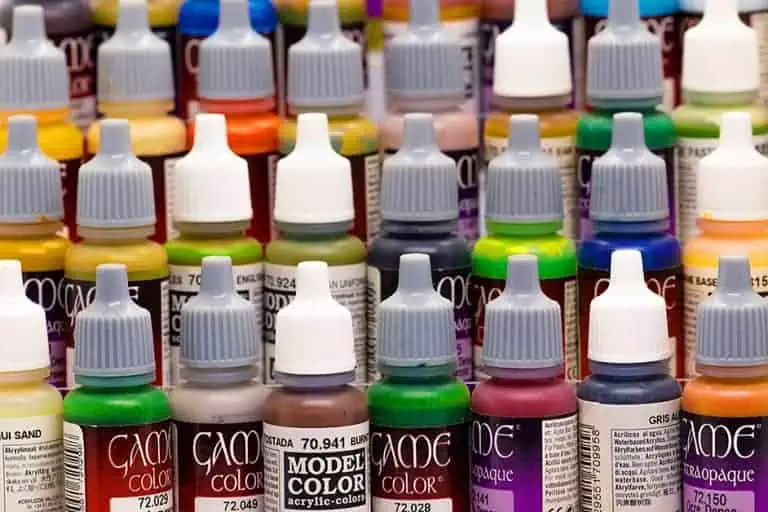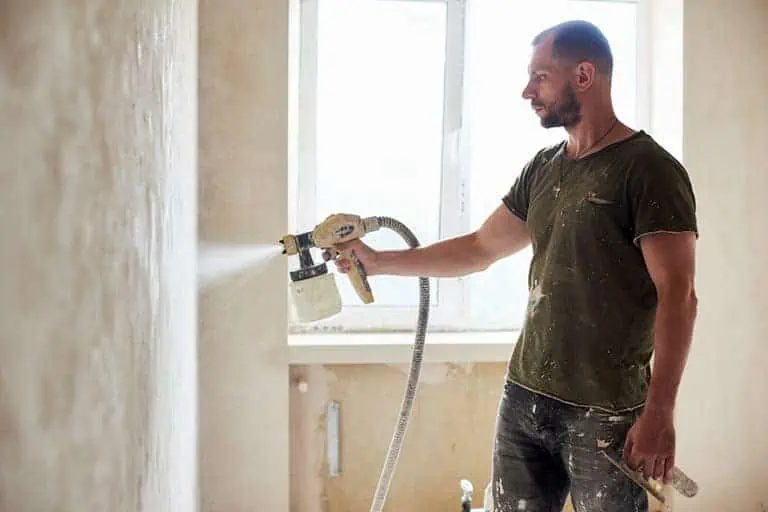How to Thin Paint for Spray Gun – Guide for Thinning Paint for Sprayer
This post may contain affiliate links. We may earn a small commission from purchases made through them, at no additional cost to you.
The result of your spray paint project relies not only on technique but also depends on how you go about thinning paint for spraying. You can be as careful as possible with spraying but if the paint is uneven or lacks consistency, your results will not be what you want. How to thin paint for sprayer is important, so we are going to guide you through the process. We will be covering HVLP spray guns as well as airless spray guns. We will also have a look at using oil-based paints and latex paint and how the two differ from each other.
Table of Contents
- 1 What to do when Thinning Paint for Spraying?
- 2 How to Thin Latex Paint?
- 3 Thinning Paint for Spraying Acrylic
- 4 How to Thin Oil-based Paint for your Spray Gun
- 5 How to Thin Paint for Different Paint Sprayer Types
- 6 Some Guidelines when Thinning Paint for Sprayer
- 7 Using a Paint Conditioner
- 8 Weather Conditions and Paint
- 9 When thinning Paints do not Keep to Strict Ratios
- 10 Testing the Paint Spray
- 11 Spray Painting and Safety Gear
- 12 Exchanging your Spray Gun Tip
- 13 Questions and Answers
What to do when Thinning Paint for Spraying?
There are a bunch of different paints out there you can use with your spray gun. The thinning process varies on the type of paint you would like to use. Let us have a look at the various types of paint.
How to Thin Latex Paint?
Latex paint is quite thick, so thinning latex paint is something you have to do when using a handheld spray gun, HVLP Sprayers, or airless paint sprayers. The paint thinning process is quite simple, you can easily use water to thin the paint. Add your paint to a measuring cup and use something to stir with. Let us have a look at the full process.
- First, open the paint container and blend the paint thoroughly. You do not have to do this as carefully if you just got the paint from the store and it has already been passed through a mixing machine.
- Take the paint and pour the amount you need into another container or bucket. Try not to pour more than you need, as the paint will thicken again if left too long. You will soon discover the correct proportions of paint and water if you mix the paint every time you fill the spray gun. The paint should have an even consistency.
- Use a one-quarter cup of water each time. This specific volume is quite small and allows you to thin the paint without making it too runny. Adding a small amount adjusts the viscosity more accurately, so you do not have to go back and forth with adding more paint than water. Stir the paint and water and test the consistency out to see if it is as desired.
- The viscosity of the paint has to fit the application, which is why testing it out beforehand is important. Take a funnel spout and run the paint through it into your bucket, ii should flow evenly out. Fill the spray gun with the paint and test it out on some cardboard or other material. If it comes out as it should write the proportions of water to paint down. Otherwise, place the paint back into your bucket and add more water.
- Repeat this process until you reach the consistency needed.
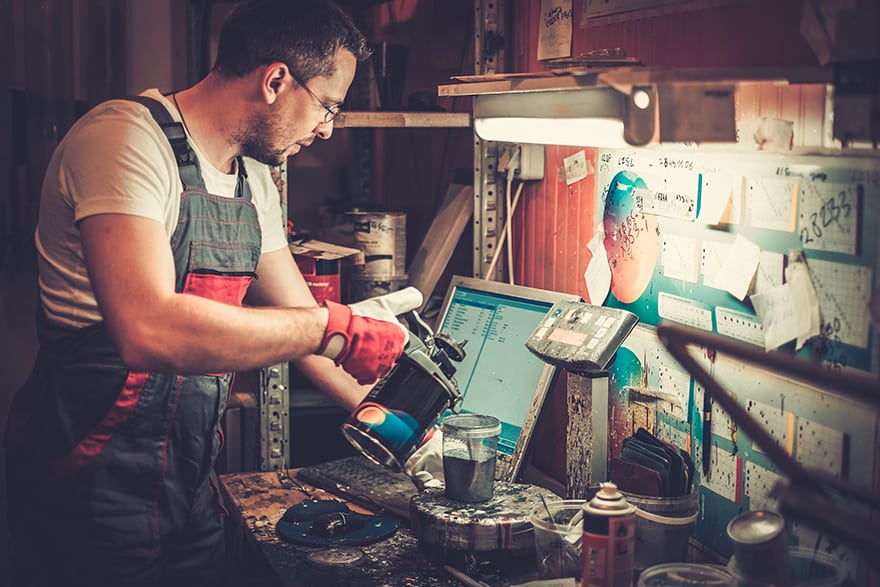
In general, thinning latex paint should be done at a minimum of 10% or 1 gallon of paint to quarter cup water. This is done if you are using anything besides the airless sprayer. However, if you are using an HVLP sprayer or handheld system, you might have to increase your water percentage to 20-30%.
Thinning Paint for Spraying Acrylic
Acrylic paints are easy to thin, as they are water-based. How to thin water based paint? You will have to be careful when thinning paint for a sprayer, as you should not add too much. Too much water can affect their ability to bond, which can lead to the paint flaking off.
When using acrylic paints on an absorbent surface, you can include up to 50% water. On other surfaces, try to keep it way below 30%.
How to Thin Oil-based Paint for your Spray Gun
When it comes to oil-based paints, like semi-gloss enamels, they need to be thinned. Oil-based paint tends to be slightly less thick than your latex paints, but still require thinning for best results. When thinning your paint, always read the manufacturer label, to verify the maximum thinning ratio.
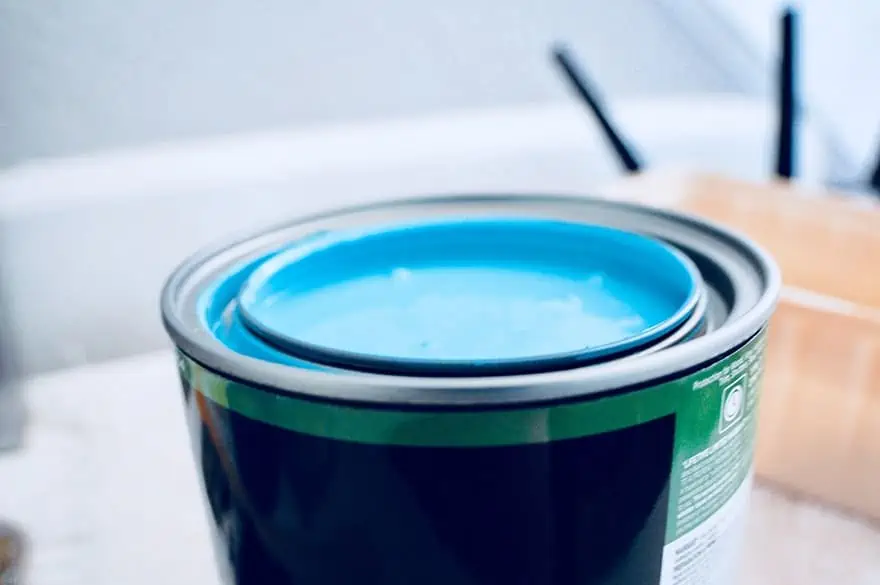
Also, check to see what the label says about the type of thinner you can use, as the oil-based paints need something more than water. The percentage needed to thin the paints is generally 10%. However, this is determined by three things:
- The type of application
- Specific coating
- Type of oil based paint sprayer used
How to Thin Paint for Different Paint Sprayer Types
HVLP (high Volume, low Pressure) Paint Gun
This is used mainly as an oil based paint sprayer. These types of sprayers can also be used with latex paints and indoor applications. However, the paint will need to be thinned out quite a bit. Start at 10% water, then add more until you achieve the desired consistency.
You can also add a paint conditioner to water-based paints like latex. This helps the paint to spray more easily without actually thinning it out, and it does not affect the paints ability to adhere to the surface.
Tips when using an HVLP spray system:
- Always strain your paint using a cone-shaped strainer, this will remove any lumps of paint. This can also be done when using an airless sprayer.
- When using a turbine system, it can warm the paint, which will then reduce the drying time. Also, it may affect the viscosity of the paint, making it thicker. All you need to do to prevent this is to use a longer hose from your turbine to the spray gun.
Airless Spray Gun
The airless spray gun systems work well with latex paints, some not even requiring any thinning paint for spraying. You can use the paint directly from the paint can. There are some limitations to the airless system when spraying paint that has not been thinned. Some of the larger systems are fine when spraying un-thinned paint, but smaller systems that are cheaper will require thinned paint to work properly.
To thin the paint, you can go for 20% water and the paint should spray fine. However, if for some reason, you use an airless system to spray oil-based paint, the paint does not need to be thinned before application.
Some Guidelines when Thinning Paint for Sprayer
When is the Paint Sprayer Paint thin Enough?
To measure accurately, a viscosity cup comes in handy. This should come with all good quality paint spray systems. The cup acts as a funnel and helps check the viscosity of the paint. You pour some paint into the cup and if the paint flows out smooth and evenly, it is good. Otherwise, if it runs out too fast, you have thinned too much, or if there are thick blobs and the paint comes out erratically, you will need to thin it more.
When the Paint is too Thin
When thinning your water-based or latex paints, use half a cup of water and mix thoroughly. If you have added too much water and the paint just runs out, it is too thin, and you will not be able to use this. You will need to slowly add some paint into your paint bucket, start with half a cup of paint. Stir thoroughly and, if you need to, gradually add more until you reach the correct consistency. The paint should pour through the funnel evenly and smoothly.

Using a Paint Conditioner
Some people have used the product known as Floetrol with latex paint, which is a paint conditioner and not a thinner. The paint conditioner helps you paint in less than optimal conditions. For example, when it is humid and extremely hot. This type of weather will dry the latex paints too quickly, not something you want happening when using a spray gun.
Using Floetrol helps the paint flow better through the spray gun and can be used in all types of weather conditions. Note, that Floetrol is a paint conditioner and not a thinner, it simply causes the paint to act like oil-based paints and, therefore, improves the flow of the paint. If you only want to thin your paint, keep to using water as explained above.
Weather Conditions and Paint
The thickness of paint can be affected by weather conditions, as mentioned before. When spraying, first set your airflow as per manufacturer’s instructions and also thin your paint according to the recommendations of the manufacturer. On your spray gun, you should see this written somewhere. Since heat and humidity can affect paint viscosity, the same will happen in cold weather conditions. You will need to adjust the thickness of the paint accordingly.
When thinning Paints do not Keep to Strict Ratios
The consistency of paint for spraying varies according to the moment. Some of the things that affect the paint include:
- Hot or cold weather conditions
- Humidity
- Air pressure
- Precise tip size of the spray gun used
So, use any instructions as a guideline and adjust according to the spray results you experience. Make small gradual adjustments, as you do not want to thin the paint too much. Thin paint will not adhere to surfaces properly and an entire paint container can be spoiled. Adjust slowly, test and move from there.
Testing the Paint Spray
Always use another surface to test on, something similar to the surface you want to paint. A smooth hardboard like Masonite is something you can easily use. Do not go for things like plywood, as it is more of a rough surface and you will not be able to judge the paint consistency accurately.
Spray Painting and Safety Gear
When painting, always wear protective gear, as, besides water-based paints, most paints can be toxic. The paints produce fumes, which can be harmful, especially to the eyes and lungs. You can use a respirator, which has a chemical cartridge and eye goggles. Also, wear gloves when working with paint, they protect and help to keep your hands clean.

Exchanging your Spray Gun Tip
When it comes to your perfect spray coating, thinning your paint is a factor but so are other things. Choosing a spray gun tip that is larger may just be a more practical way of achieving a better spray pattern.
Take a look at our thinning paint for sprayer webstory here!
Questions and Answers
Is it possible to Thin Latex Paint with Mineral Spirits?
Latex paint is water-based, so using a petroleum-based product will not work. These two substances will not mix, and the mineral spirits will also act against the paint by stopping the paint from sticking to the surface. Read the instructions on the labels, if it is latex paint simply use water to thin it out.
Is Water the Best Solution to Thin Latex Paint?
As mentioned, latex paint is water-based, so yes water is the best option for thinning this type of paint. Again, avoid mineral spirits and other thinners, which will only breakdown the paint. The paint sprayer should have instructions included with the kit, explaining how to thin the various types of paints. Take note, always use small amounts of water gradually to thin paint. Water can be added to thin the paint, but you cannot take out the water and too much could ruin the paint.
Is it necessary to Thin Latex Paint for Spraying?
Yes, the latex paint does need to be thinned. Even though latex paint is water-based, it is thicker than the oil-based paint varieties. The thick latex paint needs to be thinned to be able to spray a fine mist of paint. Before applying your paint, it is a good idea to test out the paint’s viscosity. Use a stick to mix the paint and if paint adheres to the stick when you take it out, or if the paint drops back in great globs, the paint is too thick. Whatever paint application, be it a brush, roller or spray gun, the thickness needs to be measured.
HVLP Spray Gun and Latex Paint, are they Compatible?
This will depend on the type of spray gun and the viscosity of the paint. There should be a manufacturer’s manual with your spray gun, this should tell you if latex paint can be used. If yes, you can proceed with thinning the paint and following the process of spraying as per the instructions.
In 2005, Charlene completed her wellness degrees in therapeutic aromatherapy and reflexology at the International School of Reflexology and Meridian Therapy. She worked for a company offering corporate wellness programs for several years before opening her own therapy practice. In 2015, she was asked by a digital marketer friend to join her company as a content creator, and it was here that she discovered her enthusiasm for writing. Since entering the world of content creation, she has gained a lot of experience over the years writing about various topics such as beauty, health, wellness, travel, crafting, and much more. Due to various circumstances, she had to give up her therapy practice and now works as a freelance writer. Since she is a very creative person and as a balance to writing likes to be active in various areas of art and crafts, the activity at acrylgiessen.com is perfect for her to contribute their knowledge and experience in various creative topics.
Learn more about Charlene Lewis and about us.
